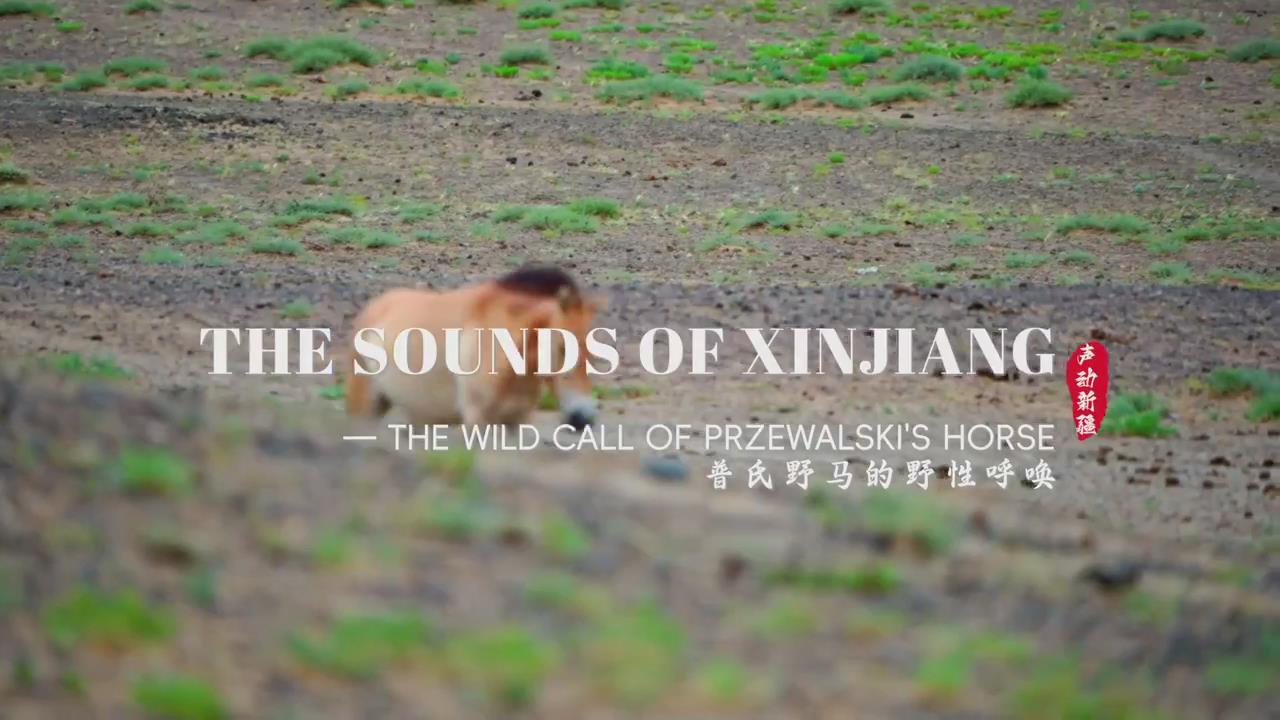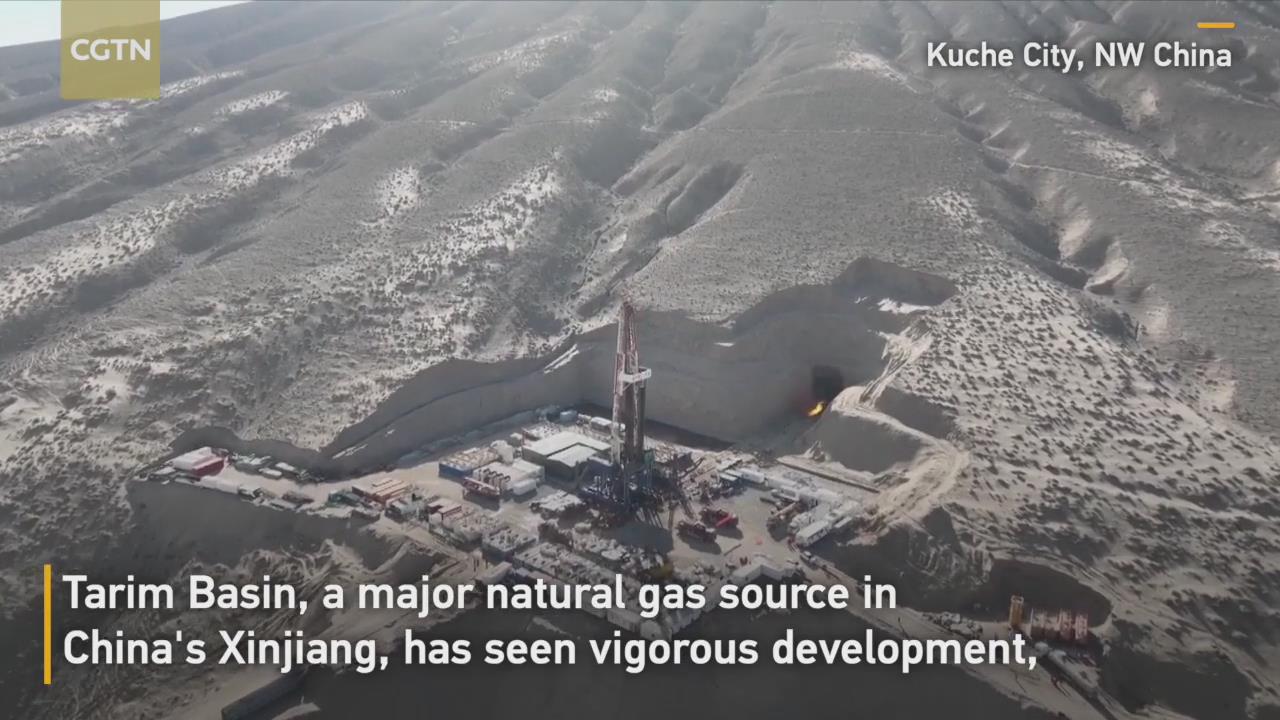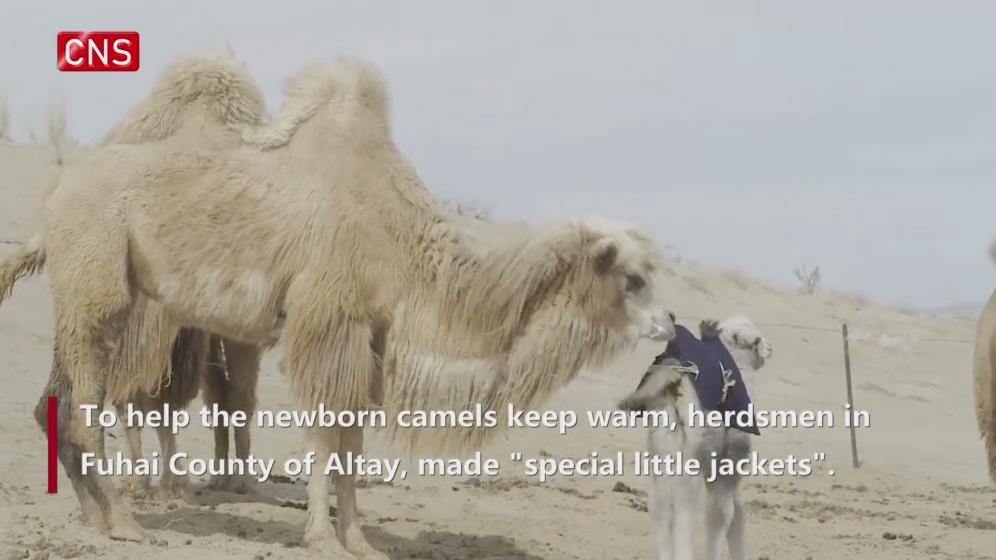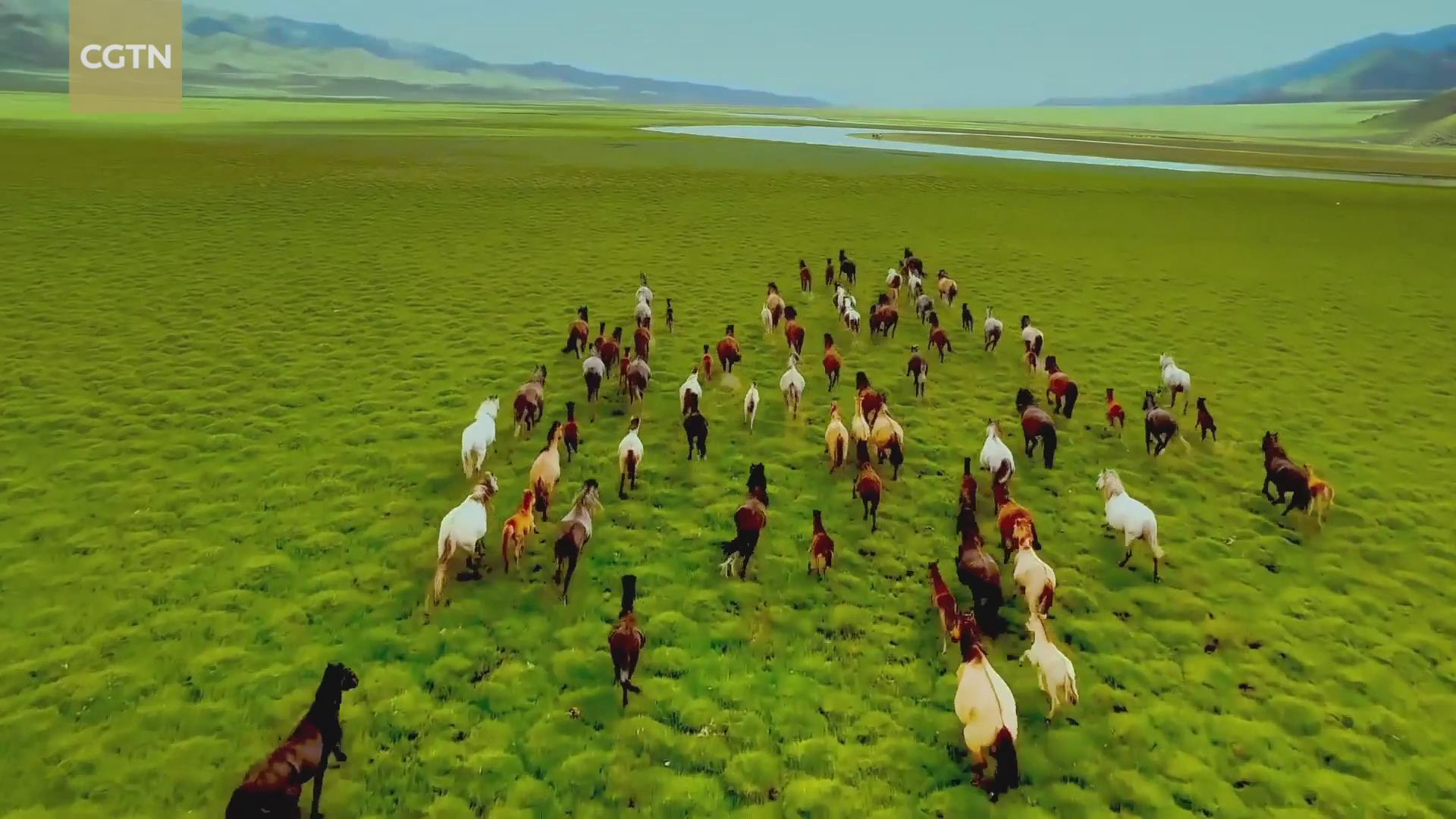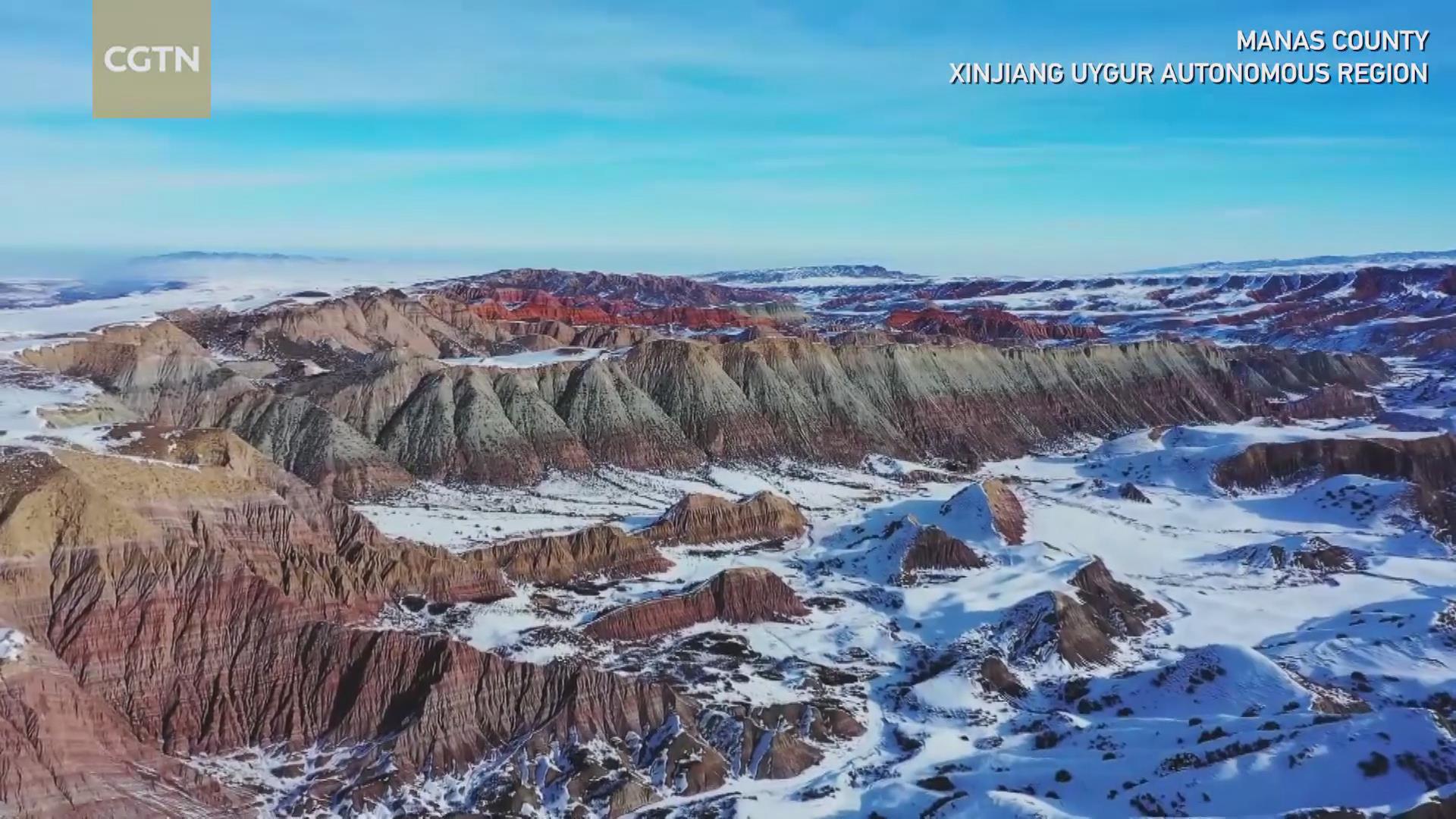In the middle of China's largest desert, Taklimakan Desert in the northwest Xinjiang Uygur autonomous region, stands a research station. Baked by the scorching sun, the station is surrounded by endless yellow sand.
Situated in this harsh environment, it is an important field research station in China that penetrates deep into the hinterland of the flowing desert. Scientists go there to carry out various kinds of experimental research in the fields of wind and sand science, as well as plant adversity ecology.
Tanned after years of working at the research station, Gao Xin, a researcher with Xinjiang Institute of Ecology and Geography (XIEG) under the Chinese Academy of Sciences (CAS), is in charge of a project focused on conducting surveys and risk assessments for drought and sand hazards in the Tarim River basin.
His team has been using a large environmental drill rig to drill beneath the sand-covered land to gather samples of sedimentary rock core. Layer upon layer, these core samples show the researchers what environmental events have occurred in the Taklimakan Desert during various geological periods in history.
Scientists believe that this unprecedented research method can provide the most direct record of the desert evolution.
"We are in the middle of the Taklimakan Desert, and the cores here best represent the desert. With our drill rig, we pull out the strata pipe by pipe, to reconstruct the formation process of the Taklimakan over millions of years," said Wang Xin, a researcher at Lanzhou University.
"The Taklimakan Desert has a huge impact on climate, and it's not well known exactly how its own climatic environment evolved," he added.
For Wang, this desert holds many secrets. Was it dry or wet during global warming? What kind of changes were there during the glacial period? How does it influence the climate? He hopes to find clues through this research.
Led by the XIEG, the project also involves researchers from various other institutes including Lanzhou University, the Institute of Geographic Sciences and Natural Resources Research of CAS, and the Urumqi Institute of Desert Meteorology under the China Meteorological Administration.
Through preliminary research, scientists have discovered that the land in the middle of the Taklimakan Desert was not always scorching hot, and there were once rivers and oases in this area.
Through the in-depth investigation of the formation and evolution of the Taklimakan Desert, we can deeply understand the formation and evolution of large deserts driven by global change and plateau uplift, said Gao.
"Our research can also provide a scientific decision-making basis for this region to cope with climate change and draw up a green development plan," he added.
According to the XIEG, the project is also a part of the third comprehensive scientific expedition in Xinjiang. The ongoing scientific expedition, which was launched in 2021 and is due to last for five years, is expected to outline a roadmap for ecological construction and green development in Xinjiang for the next 30 years.
"Xinjiang's high-quality development faces many opportunities and challenges. It must be supported by scientific data to fill in the areas for which information was previously lacking. Therefore, it is a strategic need to carry out comprehensive scientific surveys," said Zhou Xiaobing, a researcher at the XIEG.










